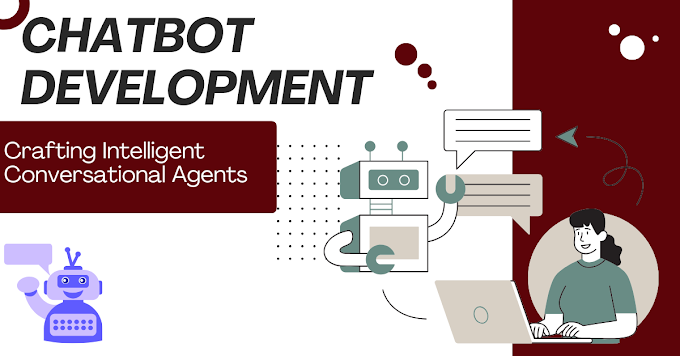Unraveling Reinforcement Learning Concepts: A Deep Dive into Intelligent Decision-Making
In the large realm of artificial intelligence, reinforcement mastering stands out as a powerful paradigm that permits machines to learn and make decisions through interplay with their surroundings. Rooted in the principles of praise-based totally getting to know, reinforcement getting to know mimics the manner humans and animals study by means of trial and blunders. In this complete guide, we will delve into the essential standards of reinforcement learning, exploring its key components, algorithms, and actual-international packages.
Understanding Reinforcement Learning: An Overview
Reinforcement mastering is a subset of system studying in which an agent learns to make selections by means of interacting with an surroundings. The agent receives remarks in the shape of rewards or penalties, permitting it to navigate the environment and optimize its choice-making process through the years.
**1. Basic Components of Reinforcement Learning
Agent:
The entity accountable for making choices and taking moves in the surroundings.
Environment:
The outside machine with which the agent interacts. It should constitute a physical area, a laptop simulation, or any context where choice-making is needed.
State:
A picture of the environment at a specific moment, providing vital information for the agent to make selections.
Action:
The specific move or decision that the agent can soak up a given nation.
Reward:
A numerical fee that the surroundings gives as remarks to the agent, indicating the excellent of the motion taken.
Policy:
The approach or set of rules that the agent employs to determine its moves in special states.
**2. Exploring the Markov Decision Process (MDP)
Definition:
MDP is a mathematical framework that formalizes the reinforcement learning hassle. It assumes the Markov assets, wherein the future state depends most effective at the contemporary nation and action, no longer on the past.
Components of MDP:
State space, movement space, transition possibilities, reward feature, and discount factor.
**3. Types of Reinforcement Learning Algorithms
Model-Based vs. Model-Free:
Model-based algorithms study the dynamics of the environment, at the same time as model-unfastened algorithms without delay study the finest policy without a model.
Value-Based vs. Policy-Based:
Value-based algorithms focus on estimating the price of states or kingdom-action pairs, whilst coverage-primarily based algorithms without delay study the most reliable policy.
Monte Carlo vs. Temporal Difference:
Monte Carlo methods estimate returns primarily based on complete episodes, at the same time as temporal difference strategies replace fee estimates incrementally after whenever step.
**4. Popular Reinforcement Learning Algorithms
Q-Learning:
A version-free, off-coverage set of rules that learns the most appropriate movement-value characteristic.
Deep Q Networks (DQN):
Extends Q-learning via the use of deep neural networks to approximate the motion-value feature.
Policy Gradient Methods:
Directly optimize the policy to maximize expected rewards.
Actor-Critic:
Combines factors of each price-based and policy-based strategies by using having an actor (coverage) and a critic (price function).
**5. Applications of Reinforcement Learning
Game Playing:
Reinforcement getting to know has excelled in learning complicated games like Go, chess, and video video games.
Robotics:
Teaching robots to perform obligations in dynamic environments, which includes grasping items or on foot.
Autonomous Vehicles:
Training motors to make most beneficial choices in actual-time traffic situations.
Finance:
Reinforcement gaining knowledge of can be applied to algorithmic buying and selling, portfolio optimization, and hazard control.
**6. Challenges and Considerations in Reinforcement Learning
Exploration vs. Exploitation:
Balancing the need to explore new actions versus exploiting acknowledged movements for most reliable rewards.
Credit Assignment:
Attributing rewards or consequences to unique moves in a chain of decisions.
Sample Efficiency:
Maximizing learning from limited facts, a critical attention in real-world programs.
**7. Future Trends in Reinforcement Learning
Transfer Learning:
Leveraging information gained in a single undertaking to improve learning in any other.
Multi-Agent Systems:
Extending reinforcement gaining knowledge of to scenarios with multiple interacting sellers.
Explainability and Interpretability:
Addressing the need for obvious and comprehensible selection-making in important programs.
Conclusion: Navigating the Landscape of Intelligent Decision-Making
Reinforcement learning, with its roots in psychology and game theory, has advanced right into a robust framework for teaching machines to make wise selections. From gaining knowledge of video games to allowing robots and self reliant automobiles, the applications are numerous and promising. As we delve deeper into the arena of reinforcement mastering, the continued research, improvements, and actual-global implementations paint a image of a destiny in which machines can autonomously navigate complex environments and make a contribution to solving problematic issues across various domains. Whether you are a novice intrigued through the ideas or an experienced practitioner in search of deeper insights, knowledge reinforcement mastering opens doors to a charming realm of synthetic intelligence.
FAQ
Q: What is reinforcement learning?
A: Reinforcement studying is a subset of system getting to know wherein an agent learns to make decisions with the aid of interacting with an surroundings. It receives remarks inside the form of rewards or consequences, permitting it to optimize its choice-making method through the years.
Q: How does reinforcement mastering vary from different varieties of device learning?
A: Reinforcement studying differs in that it involves an agent studying from its interactions with an surroundings thru trial and blunders. It specializes in making sequential choices to maximize cumulative rewards, as opposed to mastering from categorised facts as in supervised gaining knowledge of.
Q: What is the Markov Decision Process (MDP) in reinforcement studying?
A: MDP is a mathematical framework that formalizes the reinforcement learning trouble. It assumes the Markov belongings, wherein the destiny kingdom relies upon only on the present day state and action, now not on the past. MDP includes additives which includes nation space, movement area, transition possibilities, praise feature, and a discount factor.
Q: What are some popular reinforcement gaining knowledge of algorithms?
A: Notable reinforcement mastering algorithms consist of Q-Learning, that's a version-loose, off-policy algorithm; Deep Q Networks (DQN), which extends Q-learning using deep neural networks; Policy Gradient Methods, which immediately optimize policies; and Actor-Critic, which combines factors of both fee-based totally and coverage-based strategies.
Q: What are the main demanding situations in reinforcement getting to know?
A: Challenges in reinforcement learning consist of balancing exploration and exploitation, credit undertaking (attributing rewards to precise actions), and achieving pattern performance, particularly in scenarios with limited statistics. These challenges make contributions to ongoing studies and advancements in the discipline








